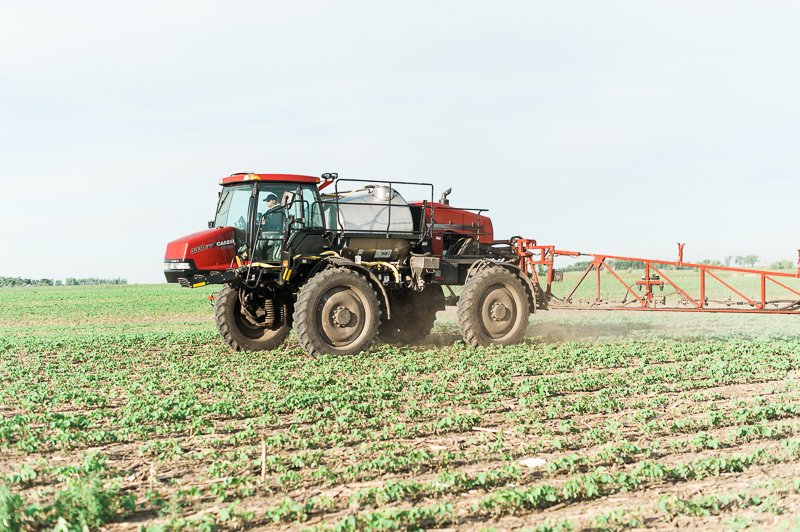How Much Pesticide Do Farmers Really Use?
Soybeans are a resilient plant. They’re able to thrive in South Dakota’s demanding climate to produce a crop used to feed people and livestock the world over.
But, like the rest of us, sometimes they can use a little help.
Soybeans are tasty, nutritious seeds that are key feed ingredients for poultry, hogs, cattle and fish. The plant is also pretty tasty, at least if you’re a soybean aphid, spider mite or other critter that likes to feed on soybean plants. Millions of insects and even fungi attack soybeans each year to steal their nutrients, causing plants to get sick or even die.
Soybeans also have some pretty rude neighbors at times. Weeds like pigweed, waterhemp and kochia try to crowd out soybeans to steal their sunshine, nutrients and water. If that happens, soybean yields can be dramatically impacted.
Like people, soybean plants face diseases that threaten to make them sick, or worse.
Farmers know this so they take steps to protect plants by fighting off soybean snackers and pushy neighbors. One of the ways they do this is by using products that kill weeds, pathogens and insects.
Crop input products, like pesticides and fertilizers, have come a long way in our lifetimes. Today, we can be confident they are safe for people and do not affect the food we eat. Pesticides, which include insecticides, herbicides and fungicides, are specifically designed to target bugs, weeds and diseases that are invasive to our crops.
You’ve probably seen farm equipment like sprayers traveling across many of the state’s soybean fields, and maybe you’ve had questions about what is in those tanks. You might be surprised to learn that the vast majority of what’s inside is water. In fact, to protect one acre of cropland, which is about the size of a football or soccer field, the amount of pesticides farmers use would fit in a cup of coffee. That’s not very much.
Farmers also have technology on their side. They can control the amount and size of the droplets being sprayed on the plants to make sure it’s effective while using as little as possible. Farmers also have technology that prevents them from spraying an area that’s already been sprayed, or from applying products over water or a waterway. That precision helps to ensure pesticides are only put where they are needed and not overused.
Farmers do all of this because soybean crops can’t fight for themselves. They are careful with the products they use and how they are applied because farmers live and raise their families on the land. They also want to pass their land on to the next generation in better shape than they found it.


